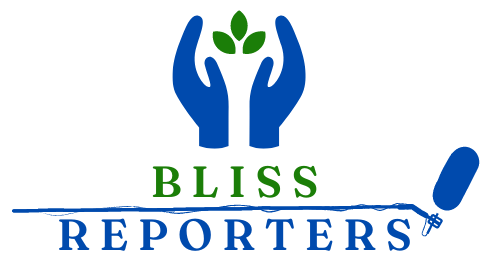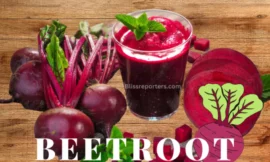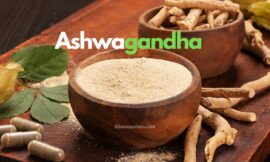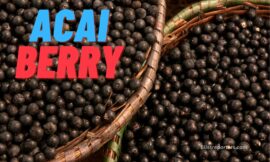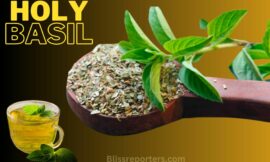Last updated on May 13th, 2023 at 07:54 am
Have you ever heard about milk thistle? This prickly plant is not a regular weed, it has been used for centuries by different cultures for its various health benefits and has been claimed to be able to help with many health issues. However, is there any factual data to believe such claims or is it just hype?
In this bliss report, we will discuss what milk thistle is, its benefits, and possible side effects. So get some thistle tea and read on.
What is Milk Thistle?
Milk Thistle, also known as Silybum Marianum, is a plant that belongs to the Asteraceae family. The milk thistle plant has purple flowers with white-veined leaves which generate a white sap when its flowers are plucked, which may be used as a remedy in the treatment of several health issues.
Milk Thistle For Liver And Gallbladder
Milk Thistle generally grows in Northern Africa, Southern Europe, and the Middle East, and it is also cultivated in China, Hungary, and South American countries. It has several other names such as Saint Mary’s Thistle, Holy Thistle, Variegated Thistle, and Scotch Thistle. It is mainly used to treat diseases associated with the liver, gallbladder, and heart, along with cancers, and diabetes. It is supposed to be helpful in stimulating milk production in lactating females.
The taste of Milk Thistle is similar to that of green tea, and it is available in the form of capsules, tablets, and liquid extract. The leaves and seeds of Milk Thistle are mainly used for several diseases. Milk Thistle helps maintain high levels of Glutathione, a natural antioxidant present in our liver, which may help in detoxing the liver.
Milk Thistle Chemical Compounds:
The health benefits of Milk Thistle might be attributed to a large number of several flavonoid compounds present along with other phytonutrients in its plant, such as:
Flavonoid compounds:
- Silymarin (a flavonoid complex)
- Silybin
- Silibinin
- Isosilibinin
- Silicristin
- Silidianin
- Quercetin
- Kaempferol
- Apigenin
Hydroxycinnamic acid compounds:
- Caffeic acid
- Chlorogenic acid
Flavanonol compound:
- Taxifolin (a flavanonol)
Silybin is the bioactive compound of milk thistle while silymarin is a group of flavonoids present in the seeds (4-6%), flowers, and leaves. Silybin is nearly 70% of the total flavonoid content extracted from silymarin. However, Silymarin is poorly absorbed in the body making milk thistle less effective if taken orally, to treat the liver and other organs of the body.
Milk thistle Benefits
Milk Thistle contains several phytonutrients which are naturally beneficial for our health and may have positive effects against certain health issues, these medicinal effects of milk thistle may aid in liver, heart, and brain-related diseases. It also increases the production of Prolactin, which is produced in the pituitary glands of females and can be used to increase milk production in lactating mothers. It aids in the treatment of fatty liver caused by drug abuse, insulin resistance, or oxidative stress. Additionally, milk thistle can help in the treatment of diabetes by improving insulin sensitivity and controlling liver inflammation.
Milk Thistle’s antioxidant properties make it a useful remedy to treat acne, which is further supported by a study where treatment with 210mg of Silymarin for 8 weeks reduced acne by 50%. To take Milk Thistle, consume it 15 minutes before food on an empty stomach.
What is Milk Thistle Used For?
- Insect bites
- Jaundice
- Menstrual problems
- Uterus problems
- Liver Cirrhosis
- Hepatitis
- Spleen disorders
- Weight loss
- Asthma
- Bone health
- Boosting of Immune system
- Reduce cholesterol
- Skin health
- Improves cognition
Milk Thistle Extract, Tea & Dosage:
Milk thistle is used as a herbal remedy which is not classified as a drug, and as such it does not have a fixed dosage. However, from several research studies and some trials of milk thistle supplements, which are available as tea, extracts, capsules, tinctures, and even powders, we can find out a general dosage range that is safe for most people.
Milk thistle supplement for General Use: 200-400 mg/day
Milk Thistle Side Effects
Milk thistle is generally safe for most people and can be taken as an adjunct therapy for various health issues or even for general wellness. However, in rare cases, it may result in some adverse effects which one should be aware of in order to properly use milk thistle. Some of those adverse effects are:
- Digestive issues: diarrhea, nausea, stomach upset, bloating.
- Allergic reactions: rare, try a small dose before using daily.
- Liver damage: rare but can occur.
- Headaches or dizziness: mild, especially at higher doses.
- Blood sugar: decrease in blood sugar levels.
- Skin reactions: rashes and sensitivity to active compounds may cause inflammation.
Precautions
- *It may react negatively with some medications
- *There is limited data on its effect on pregnant women.
- *May enhance or reduce the effect of other herbal remedies.
It is advisable to take proper guidance from a health care professional before using milk thistle as a treatment for a particular disease.
What we can conclude:
Milk thistle is a popular herbal plant that grows in a large part of the world including China, the middle east, Europe, and South America. It is a rich source of flavonoids along with several other phytonutrients known for their antioxidant activities, which might be the reason for its effectiveness in the treatment of diseases such as fatty liver, heart inflammation, and brain cell damage.
Moreover, it is also used to increase the production of prolactin which stimulates milk production in females and to protect from skin cell damage.
As a supplement Milk thistle is available in various forms and can easily be used for its health benefits. Although it is important to remember that it is not a regulated drug and must be used only as an adjunct therapy with proper guidance until more research is available on its effects on our health.
